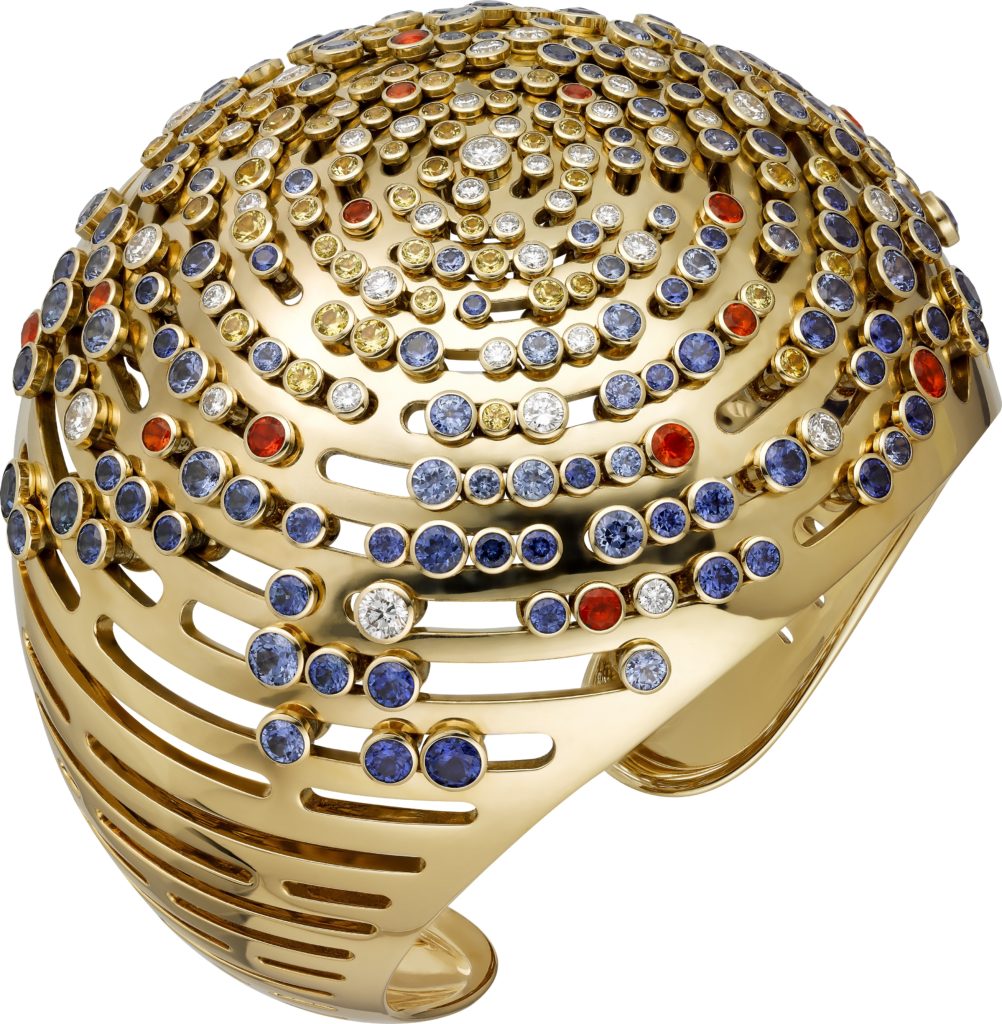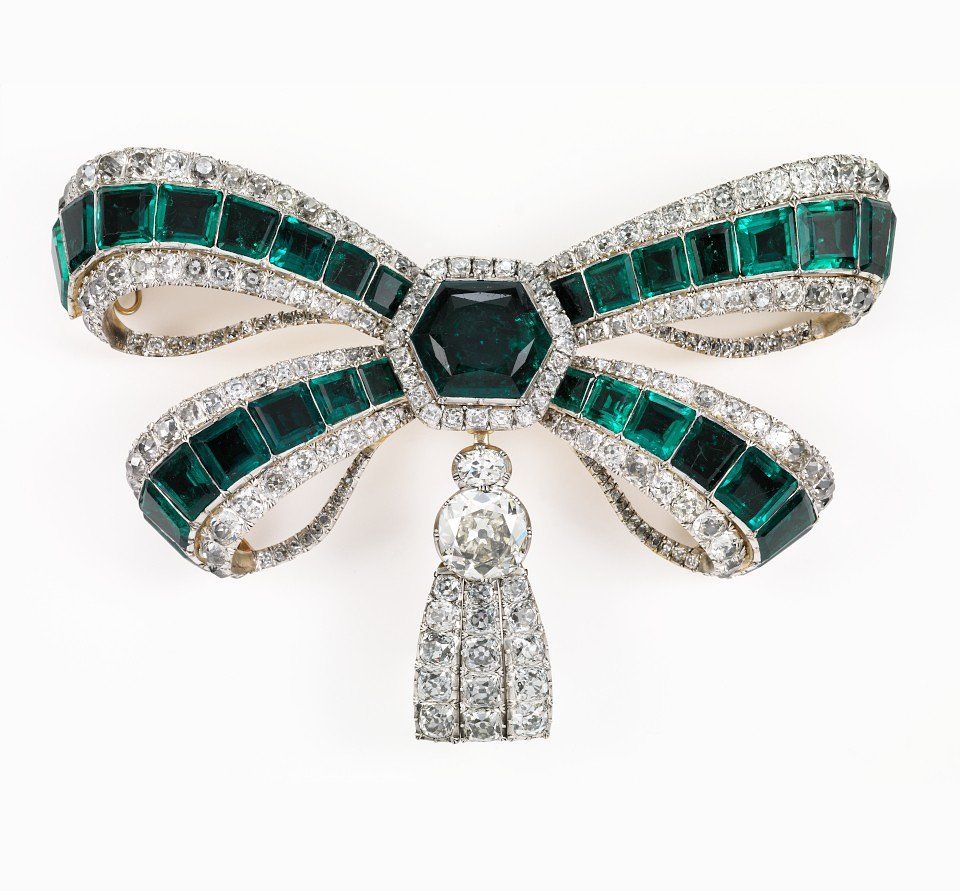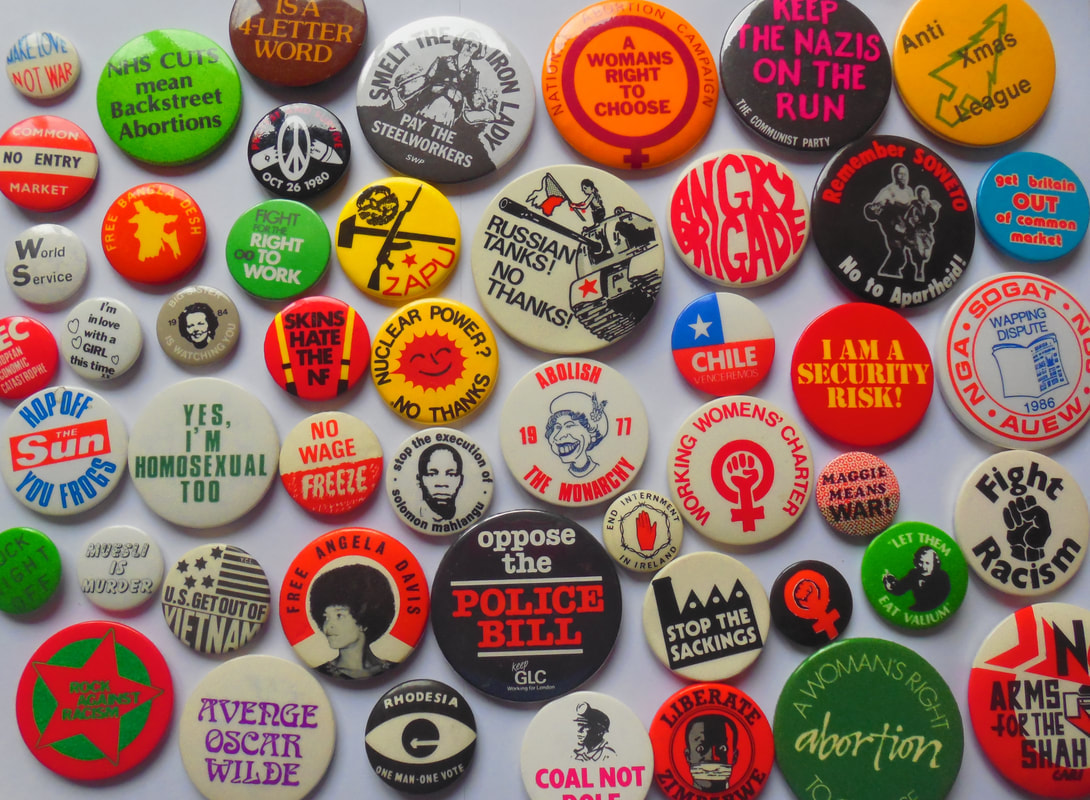In a few days’ time, Sotheby’s will be holding an auction that will make the hearts of collectors around the world beat faster. We’ll talk about it later today. But before revealing the lots not to be missed, I had to devote an article to the necklace that will be offered at the end of the sale, a necklace that belonged to Josephine de Beauharnais. And I might as well tell you that the bidding is likely to be particularly keen for such a beautiful piece!
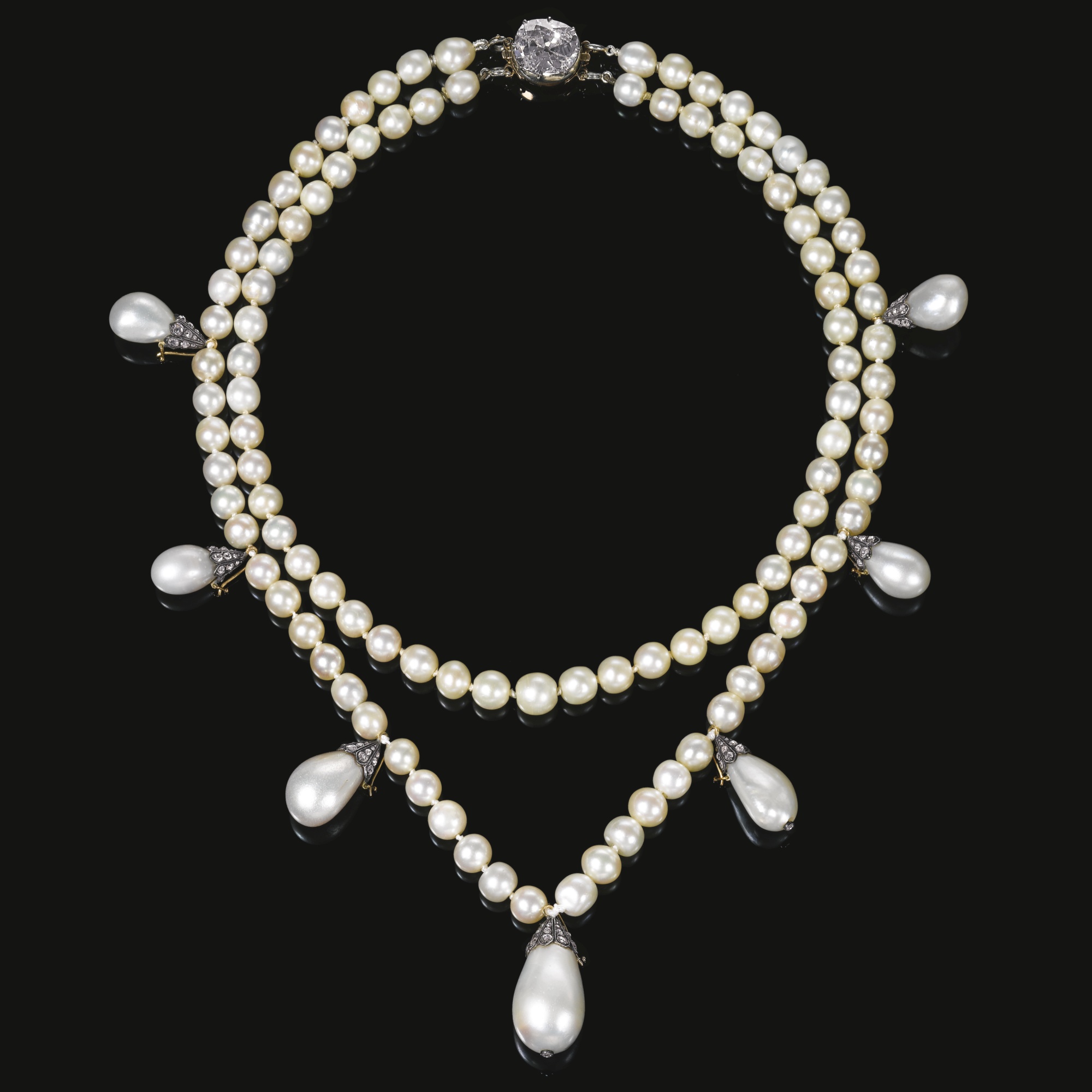
Lot 431: a fine pearl necklace that belonged to Joséphine de Beauharnais. It is estimated at between €650,000 and €1,100,000. Photo: Sotheby’s.
This necklace is composed of two strings of pearls ranging from 6.25 to 8.45 mm. In addition, there are 7 pearls and a clasp set with a cushion cut diamond. The necklace comes with its box and above all a certificate from the SSEF certifying that the pearls are natural.
This necklace, which has been depicted on numerous paintings, has a history that is closely linked to the powerful of this world, a history that I must tell you… It is not known exactly when this necklace was made (certainly at the end of the 18th century), but one of its most beautiful representations can be seen in a painting from 1820. This portrait by Joseph Karl Steiler shows Princess Augusta-Amélie Louise of Bavaria (1781-1858) wearing it.
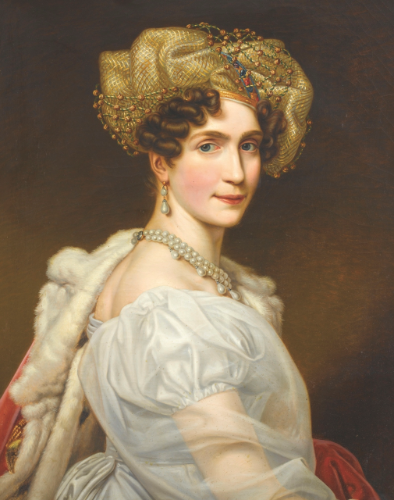
Joseph Karl Stieler (1781-1858), Portrait of Princess Augusta Amalia of Bavaria (1788-1851), © RMN-Grand Palais (musée des châteaux de Malmaison et de Bois-Préau)/Gérard Blot.
Augusta-Amélie owned this necklace simply because she had married Eugène de Beauharnais. Thus, she became the daughter-in-law of Empress Josephine, the first owner of the necklace. It is not known exactly when the necklace was passed on and two hypotheses exist. The first is that Josephine gave the necklace to her daughter-in-law while she was still alive so that she could appear at the court in Milan, as her husband was viceroy of Italy. The second hypothesis is that the jewels were shared at Josephine’s death and passed on directly as part of her inheritance. The necklace could have gone to her son. In any case, it seems that the necklace became the property of Augusta-Amélie at the beginning of the 19th century.
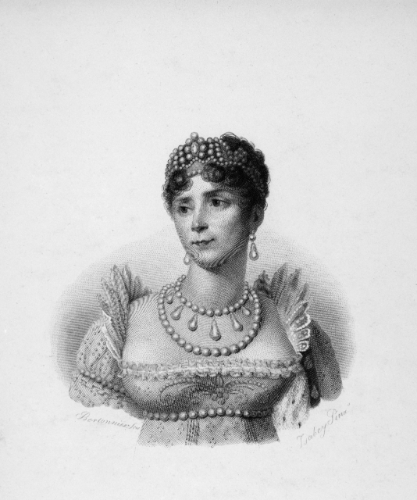
Jean-Baptiste Isabey (1767-1855), Portrait of Joséphine de Beauharnais (1763-1814), Empress of the French, © Paris-Musée de l’Armée, Dist. RMN-Grand Palais/Image musée de l’Armée. The necklace worn by the Queen is slightly different. Although the pearls are the same, it may have been modified.
Following the fall of Napoleon and the death of his mother, the Beauharnais couple took refuge in Bavaria. The children of this couple married and the descendants of this family can be found in many European aristocratic families. In 1823, the necklace changed ownership. The youngest daughter of the couple, Josephine Maximilienne Eugenie Napoleone, inherited the necklace on her marriage to the future King of Sweden, Oscar I. It was at this time that the jewel became part of the Swedish royal collection.
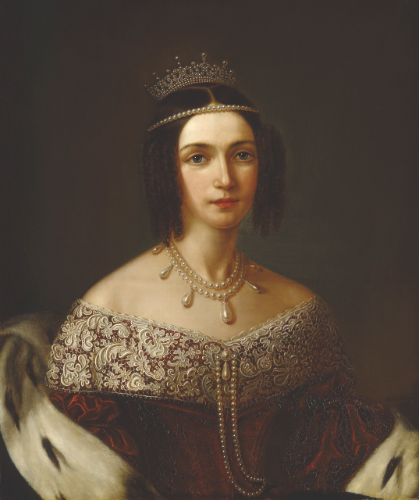
Queen Josephine (1807-1876), portrait by Sophie Aldersparre (1808-1862). nationalmuseum, Stockholm.
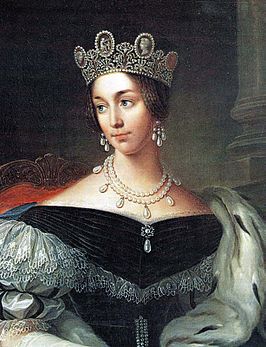
Another portrait of Queen Josephine wearing the pearl necklace. Photo: Wikipedia
The necklace, which was passed on to her descendants, is now being offered for sale and bids are expected to soar for this rare piece! See you in a few days.
See you soon!





